The cartoon above is “Disruptive Innovation” by Tom Fishburne.
This is not your typical “predictions for 2017” story. I confess, those things aren’t my cup of tea. But it is a serious call to prepare yourself for a transformative year ahead.
I believe that marketing is in the middle of five major disruptions that are reshaping our whole industry and profession. I know, that sounds like hyperbole, but it’s not. These are big tectonic shifts, and they will grow in magnitude over the next 12 months.
These five disruptions are:
- Digital transformation redefines “marketing” beyond the marketing department.
- Microservices & APIs (and open source) form the fabric of marketing infrastructure.
- Vertical competition presents a greater strategic threat than horizontal competition.
- AR, MR, VR, IoT, wearables, conversational interfaces, etc. give us digital everything.
- Artificial intelligence multiplies the operational complexity of marketing & business.
I’ll describe each one of these in more detail in their own post, starting here with Part 1: Digital Transformation.
1. DIGITAL TRANSFORMATION
Digital transformation is much bigger than marketing — it includes sales, service, products, internal operations, and so on. In many cases, it brings entirely new digital business models.
So why is this a disruption to marketing?
For many businesses, digital has simply been the domain of marketing: web marketing, email marketing, search engine marketing, social media marketing, etc. It was lightly wrapped around existing products and services. As such, marketing could operate independently from the rest of the business with a few straightforward inputs (products) and outputs (customer demand). This wrapper-like independence, by the way, enabled big chunks of marketing to be outsourced to external agencies — a model that is now in flux.
Digital transformation disrupts marketing’s isolated dominion in two ways:
- Digital is now also the concern of sales, customer service, billing, and — most importantly — the development and operations of core products and services. It requires deep, real-time collaboration between all of these departments.
- In a digital business environment, the levers that have the greatest effect on so-called marketing outcomes — growth of revenue and the brand — are not necessarily owned by the marketing department. They can be driven more by products and services teams.
In short: digital is no longer a marketing wrapper. It is infused into the core business. We can glimpse what that looks like by examining businesses already operating that way today.
Digital marketing sophistication is rather heavily skewed. Many companies are still discovering the basics of digital marketing. There’s then a long tail of more advanced marketers — the ones who have marketing technologists and impressive marketing technology stacks.
But as you examine even more sophisticated digital marketing teams, you see that they’re often a part of broader digital transformation efforts. And the most sophisticated digital marketers are the digital natives — Amazon, Facebook, Netflix, Spotify, Uber, etc. — who have grown their businesses almost entirely through “marketing” in the digital domain.
I put “marketing” in quotes because these digital natives have not grown primarily through the kinds of wrapper-like digital marketing that most businesses apply. Most digital natives don’t do a lot of content marketing, their own social media presences tend to be relatively modest, and you don’t see much display advertising from them.
Their main marketing method, if you can call it that, has been “growth hacking.” They build their digital products to optimize for customer experience: easy to try, delightful to use, compelling to upgrade, valuable to share, effortless to keep, and ever-evolving to meet changing preferences and expectations.
Growth hacking is the infusion of marketing into the product mission.
The thing is: for most digital natives, such growth hacking is usually not controlled by the marketing department. It’s under the product team.
Sure, digital natives still have marketing departments. But they tend to be limited to more communications activities that have classically defined marketing’s scope of operations. They’re generally not in charge of customer experience.
If we consider these digital natives to be lead users — pioneering on the frontier of digital marketing — then it’s plausible that other businesses will eventually follow in their footsteps. Indeed, many digital transformation initiatives are chartered to do just that. Everyone either advances along the curve above or risks being disrupted.
This poses an existential question for marketers: as their company becomes more digitally sophisticated, who will own customer experiences and control the growth levers embedded in them?
There are multiple answers to that question, but consider two alternatives illustrated above:
- Marketing and product effectively merge organizationally.
- Product and marketing remain separate organizationally, with product owning customer experiences and marketing’s scope contracting back to communications.
The first alternative is arguably what’s happening in firms where a chief digital officer (CDO) or chief customer officer (CCO) is orchestrating customer experiences — or in companies where the CMO explicitly owns digital commerce or customer experience. According to the latest CMO report from Gartner that includes a significant portion of large enterprises today:
Yet the second alternative is more common in digital natives, who created and grew their digital products outside of the marketing department to begin with. For these companies, frankly, their product leadership demands more technical depth than their marketing teams are capable of managing.
No offense is intended by that observation. But there are limits to the product development capabilities of most marketers that may naturally define logical skills-based boundaries to the marketing department.
In between those two alternatives is a wide range of collaborative models, many of which may look rather messy on a formal org chart. Welcome to the tangled world of entwined overlaps instead of rigidly neat silos.
If product and marketing are separate teams — and looking at the lead user digital natives, I think they will be, even if they roll up under the same top-level executive — marketing may still wield significant influence on experiences, not merely communications. But “influence” is the operative word here; not necessarily ownership.
Ironically, the relationship between marketing and product may likely resemble the one we’ve seen emerge between IT and marketing in the era of the marketing technologist.
As we witnessed the democratization of IT — where many departments directly manage their own technology under the governance of, and with some central services from, IT — we could see the democratization of marketing. Sales, customer service, billing, and product teams will all have explicit marketing components of what they do — product most of all — which they will manage themselves. Marketing will provide governance of the brand and offer shared services and technologies to support them.
Whichever model your company chooses, digital transformation will disrupt “marketing” across the firm. The opportunity is to proactively shape what that new organization will be.
The next article in this series is Part 2: Microservices & APIs.
If you found this article relevant, you should plan to attend the MarTech conference series, where leading practitioners and experts share their experiences and insights at the evolving intersection of marketing, technology, and management.

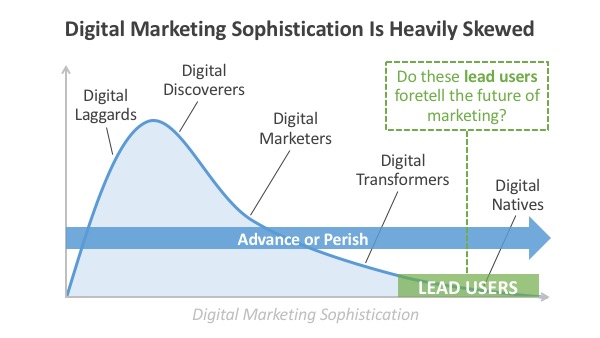
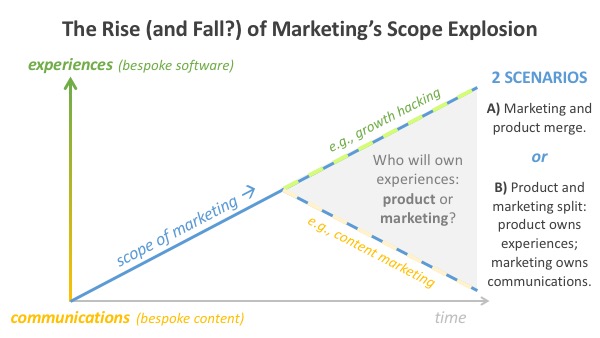
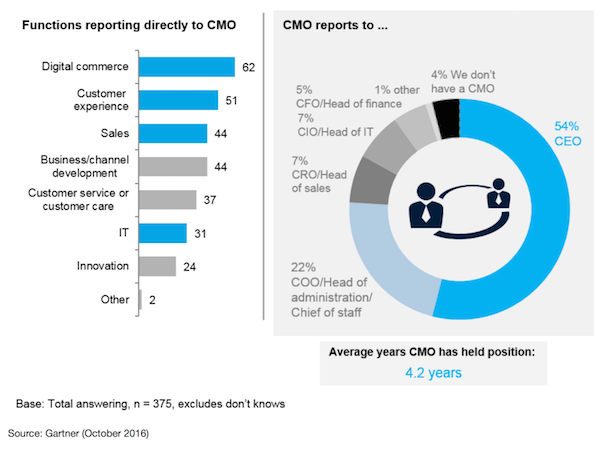
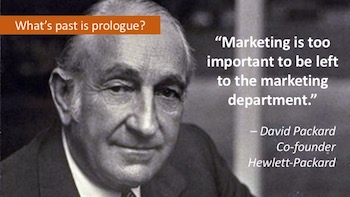

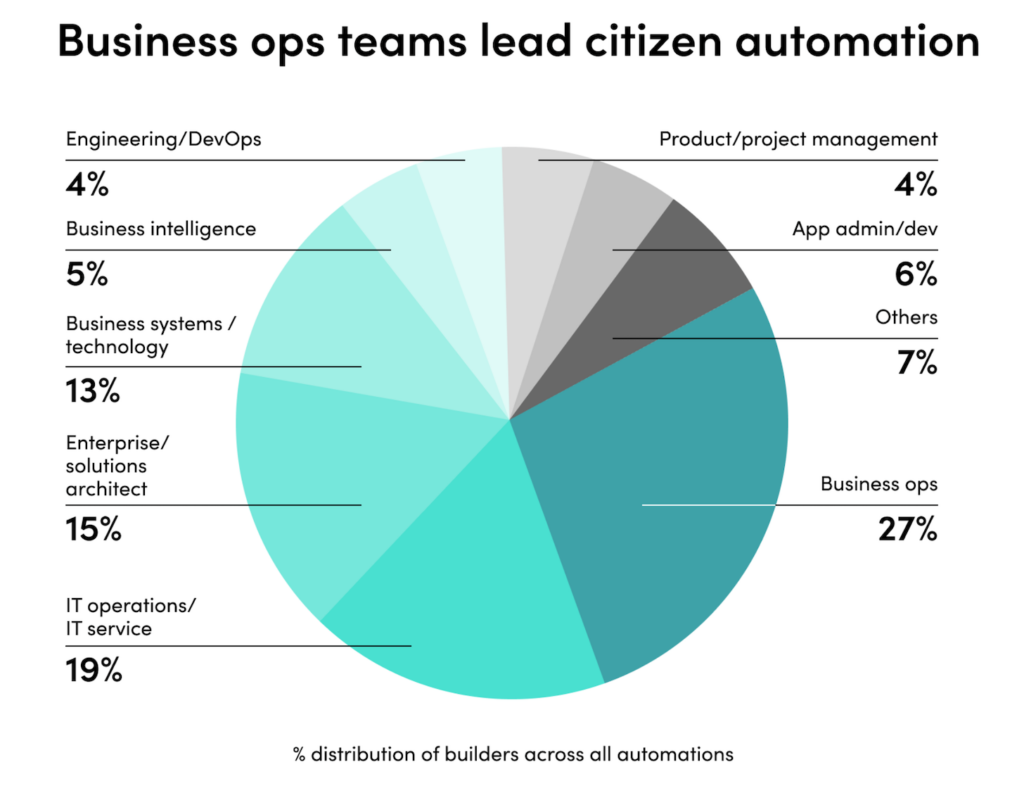

Seems like a narrow view of marketers to me, with some arbitrarily drawn boundaries on the capabilities/skill sets of “marketers.” Interesting nonetheless.
Could be narrow. Could be wide. Two different companies could have two vastly different sets of capabilities in their marketing departments — much more so in this new environment than ever in the past.
I make no sweeping judgment as to which is the “right” approach. It depends on many things.
But if marketers aren’t consciously thinking about these boundaries, and choosing where they want to define them, I think they will find themselves entangled in a digital mess.
Yes, a narrow view of marketing that must come from someone who isn’t a marketing pro. “Growth hacking is the infusion of marketing into the product mission” – what?? The product mission?? How about working on the mission of the organization as a whole then determining how products can help them fulfill the mission. Marketing is the primary function of any organization; technology is always in a supporting position. When it leads, we’re all in trouble.
There is an important distinction between technology and product. Product as a function owns the vision and strategy for the relationship between the product and users, which is why some companies see growth hacking as a product function. Technology on the other hand owns the vision for how the product is engineered. In most good companies, technology groups do have influence on the high-level vision for the product they are building, but the product group’s core purpose is to bring business acumen to the process of building a technology product.
It’s important to note that this sort of structure is mostly found in technology companies — especially those where the company and product are almost synonymous and the product and company missions are the same.
What I find interesting in this transformation is that many team members such as product managers and engineers are trained to think about humans as users, whereas marketers are trained to think about humans as consumers, which I believe is where the distinction in skill sets lies. However *most* marketing people aren’t trained in the product development process which, from personal experience, is very different from that of the process of developing communications.
In short, most marketers indeed do lack the hard skills and understanding of tech products necessary to develop innovative growth hacking strategies. Likewise, product teams’ focus is primarily centered around determining what to build and how that fits into a product roadmap, which in my experience does include monetization, but not explicitly marketing.
If marketers are going to make the transition to ‘product marketing’ or growth hacking, they need to be trained on how products are developed and learn how to work alongside engineers and product managers (among other stakeholders). While the goal of generating demand and acquiring customers is the same, growth hacking and marketing are almost two separate disciplines that utilize two separate skill sets and processes.
If I were to set up a company today I would have a product development manager aimed at improving the product and a product marketing manager aimed at growing users, both working side-by-side.